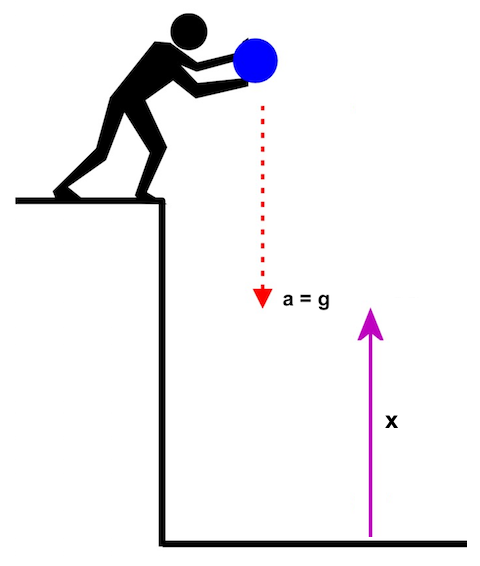Physics Notes - Herong's Tutorial Notes - v3.25, by Herong Yang
Hamiltonian on Free Fall Motion
This section provides an example of calculating the Hamiltonian on a simple mechanical system of an single object in free fall motion and applying the Law of Conservation of Energy.
What Is Free Fall Motion? Free Fall Motion is simple mechanical system of a single object with mass, m, falling freely to the ground under the force of gravity.
To calculate the Hamiltonian of the free fall motion system, we can express the object's kinetic energy, T, and potential energy, V, as:
T = m*v*v/2 # m is the mass of the object # v is the velocity of the object V = m*g*x # g is the standard gravity (9.80665) # x is the height of the object
So the Hamiltonian, H, of the free fall motion system can be expressed as:
H = T + V or: H = m*v*v/2 + m*g*x
Since this free fall motion can be considered as an isolated conservative system, we can apply the Law of Conservation of Energy:
H = constant
or:
m*v*v/2 + m*g*x = constant
or:
d(m*v*v/2)/dt + d(m*g*x)/dt = 0
# Since d(constant)/dt = 0
The last equation can be simplified as:
m*v*dv/dt + m*g*dx/dt = 0 # The chain rule for derivatives applied m*v*a - m*g*v = 0 # a = dv/dt, is the acceleration of the object # v = -dx/dt, is the velocity of the object a - g = 0 a = g (H.4) # Cancel out m*v from the equation
Cool. Equation H.4 matches perfectly with Newton's second law of motion:
F = m*a (H.5) # Newton's second law of motion m*g = m*a # Gravity force, F = m*g, applied. a = g (H.4) # Cancel out m from the equation
With equation H.4, we can easily figure out the position h, the velocity v, and the acceleration a as functions of time t:
a(t) = g v(t) = g*t + v0 # v0 is the initial velocity h(t) = -g*t*t/2 - v0*t + h0 # h0 is the initial position
The following picture illustrates an object in free fall motion (source: owlcation.com):

Table of Contents
Introduction of Frame of Reference
Introduction of Special Relativity
Time Dilation in Special Relativity
Length Contraction in Special Relativity
The Relativity of Simultaneity
Minkowski Spacetime and Diagrams
►Hamiltonian on Free Fall Motion
Hamiltonian on Simple Harmonic Motion
Hamiltonian on Simple Pendulum Motion
Relation of Momentum and Hamiltonian
Hamiltonian in Cartesian Coordinates
Relation of Momentum and Potential Energy
Hamilton Equations in Cartesian Coordinates
Introduction of Generalized Coordinates